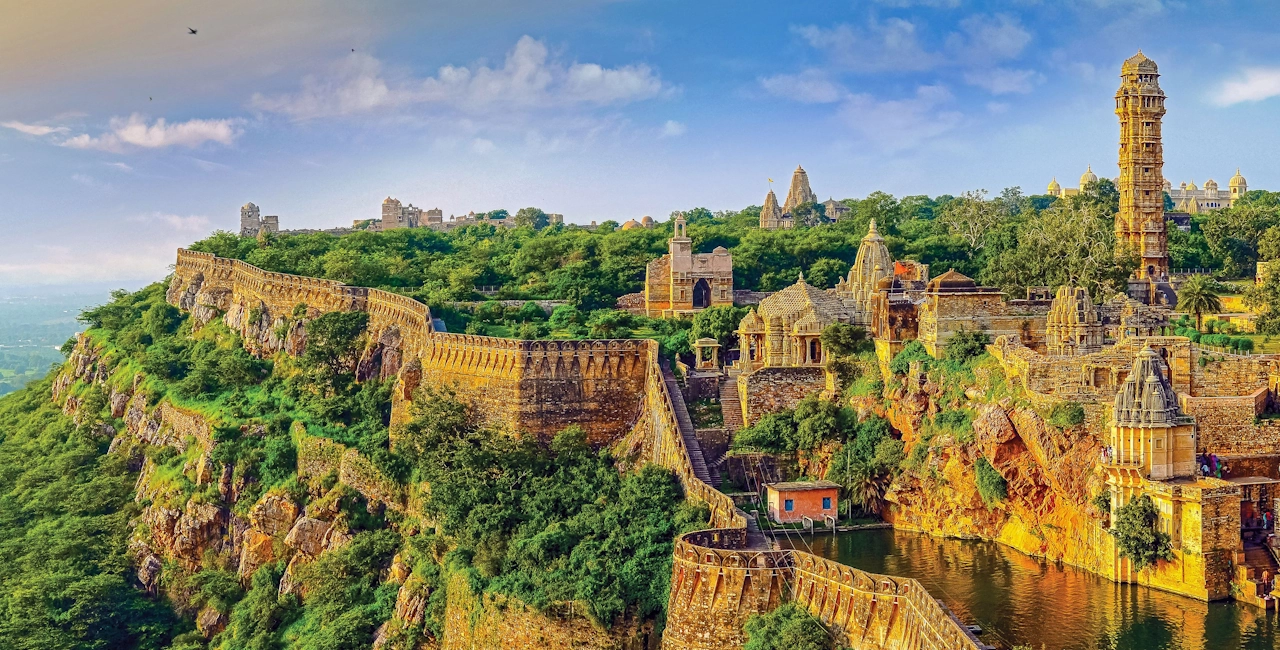Chittorgarh, the land of valiant Rajputs, is a city in Rajasthan that resonates with tales of heroism, sacrifice, and grandeur. Once the capital of the Mewar kingdom, Chittorgarh is home to one of India’s most formidable forts, the Chittorgarh Fort. This historic city, rich in architectural marvels and cultural heritage, stands as a testament to the bravery and resilience of the Rajput rulers.
Historical Significance
Chittorgarh has a long and storied history, dating back to the 7th century. The fort was established by Chitrangada Mori, a ruler of the Mori dynasty, and later captured by Bappa Rawal, the founder of the Mewar dynasty. The city witnessed three major sieges: first by Alauddin Khilji in 1303, then by Bahadur Shah of Gujarat in 1535, and finally by Akbar in 1568. Each time, the defenders chose death over dishonor, with Rajput warriors fighting bravely and Rajput women committing jauhar (self-immolation) to avoid capture.
The Magnificent Chittorgarh Fort
The Chittorgarh Fort, a UNESCO World Heritage Site, is the largest fort in India, sprawling across 700 acres. It is a masterpiece of Rajputana architecture and houses several palaces, temples, and towers that tell the saga of Mewar’s history. Some of the major attractions within the fort include:
- Vijay Stambh (Tower of Victory): Built by Rana Kumbha in 1448 to celebrate his victory over Mahmud Khilji, this 37-meter-high tower is intricately adorned with sculptures of Hindu deities.
- Kirti Stambh (Tower of Fame): A 12th-century structure dedicated to Jainism, featuring exquisite carvings.
- Rana Kumbha Palace: The birthplace of Maharana Udai Singh, the founder of Udaipur, and associated with the tragic jauhar of Rani Padmini.
- Rani Padmini’s Palace: Famous for the legend of Rani Padmini, who was admired for her unparalleled beauty and bravery.
- Meera Temple: Dedicated to Meera Bai, the saint-poetess and devotee of Lord Krishna.
Legends and Folklore
One of the most famous legends of Chittorgarh revolves around Rani Padmini. It is said that her beauty mesmerized Alauddin Khilji, who waged war against Chittorgarh to possess her. However, to uphold her honor, Rani Padmini and thousands of Rajput women performed jauhar, while the Rajput warriors fought to their last breath.
Another legendary figure associated with Chittorgarh is Maharana Pratap, who, despite losing his kingdom to Akbar, continued his resistance against the Mughals, becoming a symbol of Rajput valor.
Festivals and Celebrations
Chittorgarh celebrates numerous festivals that reflect its rich cultural heritage:
- Jauhar Mela: Held annually to commemorate the sacrifice of the Rajput women.
- Meera Mahotsav: Celebrating the life and devotion of Meera Bai.
- Teej and Gangaur: Vibrant Rajasthani festivals celebrating womanhood and marital bliss.
Best Time to Visit
The ideal time to visit Chittorgarh is between October and March, when the weather is pleasant for exploring the fort and other attractions.
How to Reach Chittorgarh
- By Air: The nearest airport is Maharana Pratap Airport in Udaipur, around 90 km away.
- By Rail: Chittorgarh is well-connected by rail, with regular trains from major cities like Delhi, Jaipur, and Udaipur.
- By Road: The city has excellent road connectivity with major highways linking it to Jaipur, Udaipur, and Ahmedabad.
Nearby Attractions
- Udaipur: The City of Lakes, just 120 km away.
- Kumbhalgarh Fort: Famous for its massive walls, second only to the Great Wall of China.
- Ranthambore National Park: A haven for wildlife enthusiasts, located around 270 km from Chittorgarh.
Conclusion
Chittorgarh is not just a historical site; it is a symbol of Rajput pride, courage, and sacrifice. Walking through its fort and listening to its stories is like stepping back in time, where every stone narrates a tale of bravery. Whether you are a history buff, an architecture enthusiast, or a traveler seeking cultural richness, Chittorgarh promises an unforgettable experience.


0 Comment